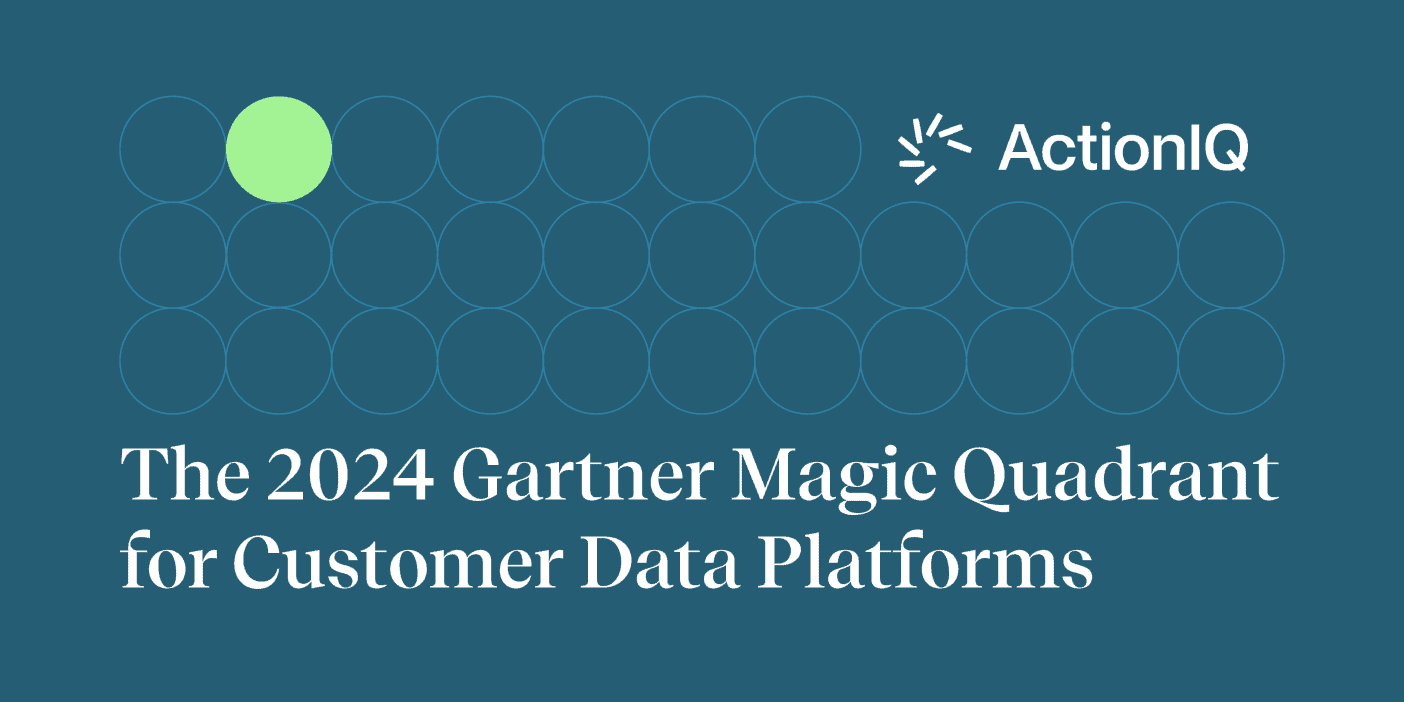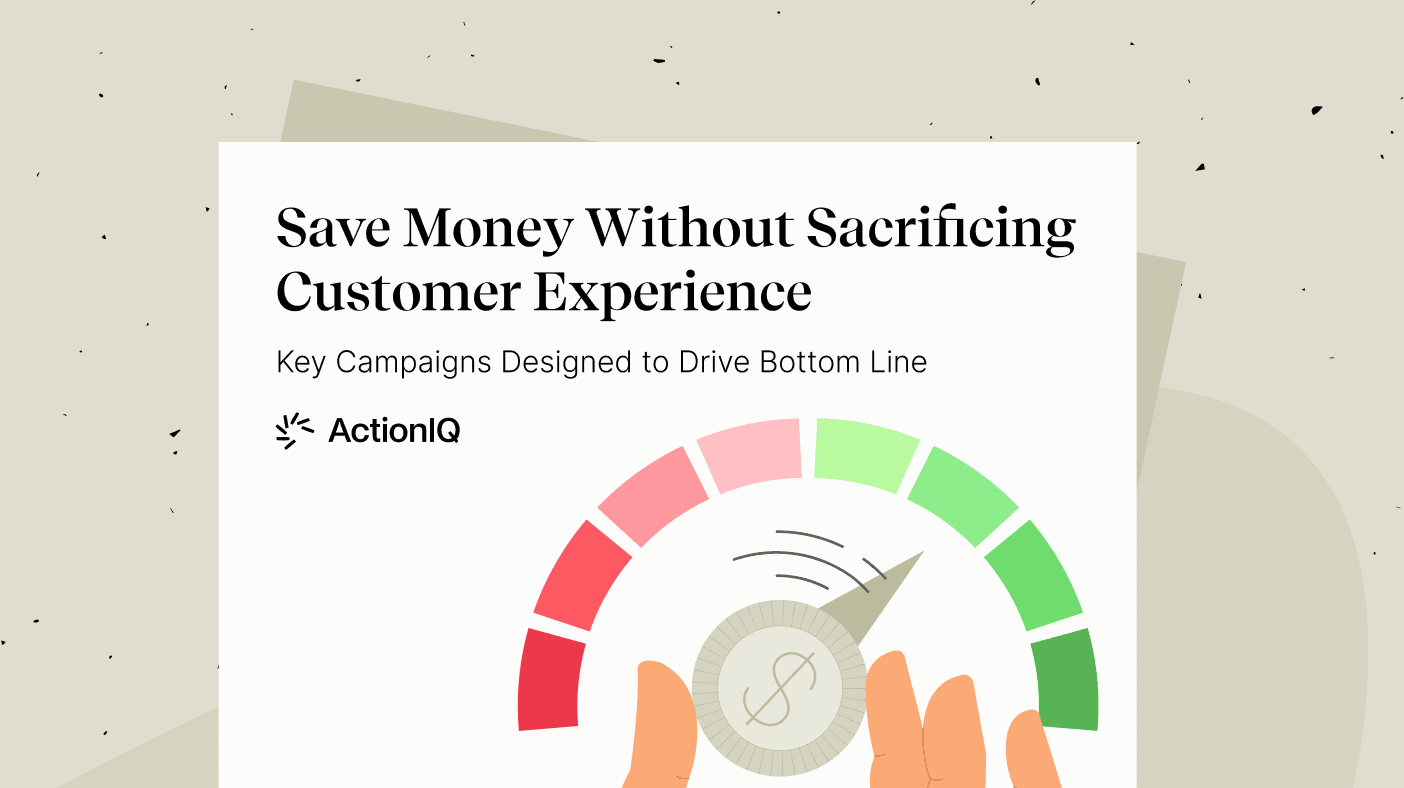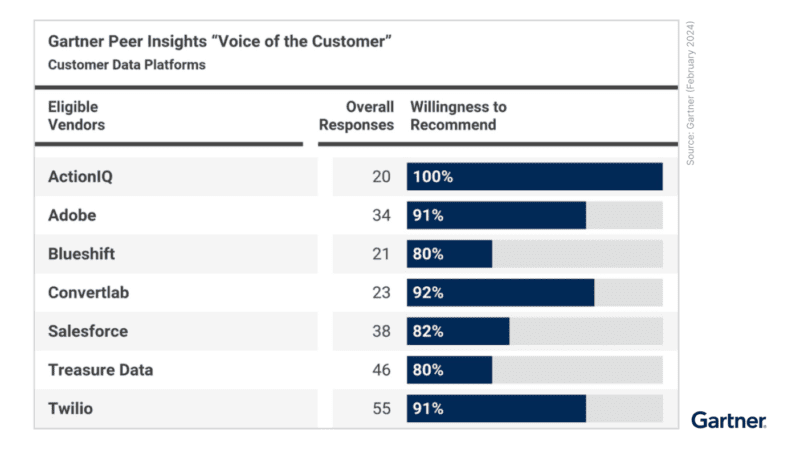CDP Integration: How CDPs Went From Data Repository to Integration Environment

CDP integration is one of the most important criteria in your selection process. And in general, integrations have the power to make or break your stack.
In fact, customer data platforms (CDPs) have evolved from data repositories to robust integration environments, playing a pivotal role in customer data activation.
As businesses navigate the CDP market, they need to take a hard look at each vendor’s integrations for destination platforms. These integrations ensure the CDP works seamlessly with the diverse technologies in an organization’s tech stack and the destination platforms regularly used for delivering customer experiences at scale.
Why is CDP Integration So Important?
Customer data platforms are all about connection. The core promise of a CDP is to connect you to your customers through customer data.
That commitment should extend to the very fabric of the CDP’s design. As the ecosystem grows, so does the need for a customer data platform to prioritize and maintain that connection for customers through partnerships and integrations that matter.
Here’s what’s at stake with any customer data platform integration:
1. Data Accessibility and Accuracy
With better integrations, comes better accessibility across applications. Interoperable systems enable a complete view of the customer, better experiences, better analytics and more. Unlocking full and complete data is critical to CDP integration.
2. Data Democratization
With the right integrations, IT and data teams don’t have to spend all of their time fixing broken links and getting the data that marketing teams need delivered to them in the format they need. With the right integrations, marketing and customer experience teams can self-serve access to the data they need, when they need it.
3. Less Cost
Integrations aren’t cheap. Not only do they cost your team’s time, but the setup of some integrations may include hidden costs for additional support. With the right integrations, your team can connect quickly and easily, without sacrificing spend.
4. Future-Proof Growth
As your business grows, you need the ecosystem to grow with you. Your customer data platform is the center of your stack, connecting you to your customers.
It needs to be able to handle scale and complexity. This includes the ability to integrate in real time for in-the-moment customer experiences and intervention, growing data volume, new channels and more.
5. Better Customer Experiences
With your CDP fueling all of your customer experiences, you need the full dataset to leverage in all of your downstream channels for activation. With the right integrations, you get all of those insights that fuel more personalized and contextualized customer experiences – directly impacting your revenue goals.
Often, integrations are used as a marketing tactic rather than a real part of the customer data platform service. Below, we’ll help you dig under the hood to make sure you’re getting what you need from your next CDP.
6 Key Criteria for Customer Data Platform Integration
This recent Ascend study shows that integrating disparate systems is one of the biggest hurdles that marketers face in achieving success with marketing technology, with 36% of marketers citing this as a major challenge. And IT teams are leading the charge in course-correcting integrations.
IT teams are heavily invested in ensuring that integrations are properly configured, secured and running efficiently. According to a recent Digibee study, integrations can consume up to 25% of enterprise IT budgets, which is a substantial cost.
Additionally, half of all companies rebuild six or more integrations each year, and 79% of new integrations cause significant downtime, which can easily cost more than $1 million per hour.
There’s a lot for IT and data teams to consider to get this right – and it’s way less expensive to get it right the first time.
When you are evaluating any CDP integration, there are 6 key criteria you should consider: scale, flexibility, ability to customize, latency, accuracy and reliability (consult the full blog on the top 6 criteria to evaluate CDP integrations here).
1. Scale
To achieve consistent data flow between two systems even under heavy workloads, a scalable integration is essential. This is particularly important for B2B organizations that handle large volumes of data, or any organizations that experience seasonal traffic spikes, such as e-commerce websites during the holiday season.
2. Flexibility
The level of flexibility allowed in the integrations matters, which should include the following elements:
- Support all data sources, destinations and formats to minimize the manual work needed to manipulate the data, saving time and resources.
- Support various integration types for getting data in and out between systems, and provide users with options — pull-based (API, Direct Query via JDBC) or push-based (API, File) — so organizations can choose the option that best fits their unique workflow.
- Support bidirectional data sync to enable data to flow back and forth between two systems, allowing businesses to pursue a wider range of use cases.
3. Ability to Customize
Packaged connectors fall short of meeting the workflow requirements of businesses, which emphasizes the importance of CDP vendors being able and willing to create custom integrations that cater to the unique needs of their clients. Custom integrations ensure optimal performance, and future-proof the CX stack by enabling integration not only with current applications but also new ones added to a stack.
4. Latency
To support real-time use cases requiring quick data processing for timely decisions, low latency integrations are non-negotiable. This means a robust data pipeline within the customer data platform for fast workload processing, as well as managing rate limits during data ingestion and activation.
It’s important to note that strict rate limits in downstream systems could potentially restrict data transfer speed, especially when dealing with large data volumes.
5. Accuracy
A high-performing integration is able to maintain data accuracy and consistency across various systems. The occurrence of errors during data transfers should be minimized to ensure the accuracy of the transferred data, which is crucial for enabling effective business processes and generating accurate insights.
6. Reliability
In addition to standard SLAs, CDP vendors meeting the requirements for reliability should have monitoring and alerting for integrations in place that enable client’s IT teams to approve changes in the integrations without having to maintain them directly. This approach allows users to adopt and manage the application with consistency and control, while reducing manual steps and cutting operational costs.
By having reliable integrations, businesses can avoid downtime and minimize the risk of errors, ensuring that their operations run smoothly and efficiently.
The Blueprint of CDP Integration
When evaluating customer data platforms, make sure you understand each categorization to ensure that you’re getting the integrations you need across your stack – enabling better experiences for your customers, and easy workflows for you and your cross-functional team.
You can also check out our full guide for all the details you need on mastering integration patterns with ActionIQ.
1. Data
Raw pieces of information, unaggregated and taking various forms. For example, it could be raw clickstream data of a user—capturing every user interaction online.
2. Profiles
Building upon raw data, each profile represents an individual entity, capturing essential attributes and characteristics.
3. Segment
Categorized profiles based on shared characteristics, such as demographics or behavior, forming structured groups of individuals with commonalities.
4. Enriched Segment
Take segmentation a step further, enriched segments enhance data with additional attributes, adding context for personalization.
5. Delivery
This streamlines from raw data to segments within the CDP, connecting them directly with content or campaigns, bypassing intermediary steps in destination platforms.
2 Sample CDP Integration Patterns from ActionIQ
ActionIQ takes integrations so seriously that we wrote an entire guide on mastering integration patterns for customer data activation to help you unlock success. Building on the foundation of customer data platform integration outlined above, the full guide includes a list of core integration patterns with best fit, examples and use cases.
Below, we have two examples of integration partners you can activate with ActionIQ.
1. Native Enriched Segment
The Native Enriched Segment integration pattern, executed through a series of API calls, focuses on creating highly targeted customer segments within the destination platform while enriching them with contextual attributes.
While the terminology may vary depending on the destination platform (e.g., Segment, Data Extension, Contact List), the fundamental structure remains consistent—a segment containing customer data and relevant attributes that provide context specific to the use case.
This pattern is widely used to integrate marketing technology platforms, making it easy to share audiences with delivery channels to enable context-rich communications.
Message Delivery
The Message Delivery pattern is crafted to directly initiate message sends, such as an email, to recipients within a specific segment.
Within ActionIQ, in addition to creating the segment of recipients, users are able to indicate the desired template for the email message that the people in the segment will receive.
This pattern is common for Email Service Providers (ESPs) and scenarios requiring direct initiation of message sends from ActionIQ. It is well-suited for client teams that prefer setting up the end-to-end use case within a single UI, minimizing the work required in the destination platform.
Get the Best CDP Integration in Your Next Implementation
We read an article in MarTech last year about how the CDP deployment scene plays out when integrators aren’t at the level they need to be, leaving developers to deal with “wrangling an octopus.” Don’t adopt a customer data platform that gives you more work than it’s worth.
At ActionIQ, we prioritize integration quality with our diverse set of patterns, providing the flexibility to meet the needs from destination platforms present in your stack. Read our full guide to discover more about how we make CDP integration easy for your team: Mastering Integration Patterns for Customer Data Activation.





